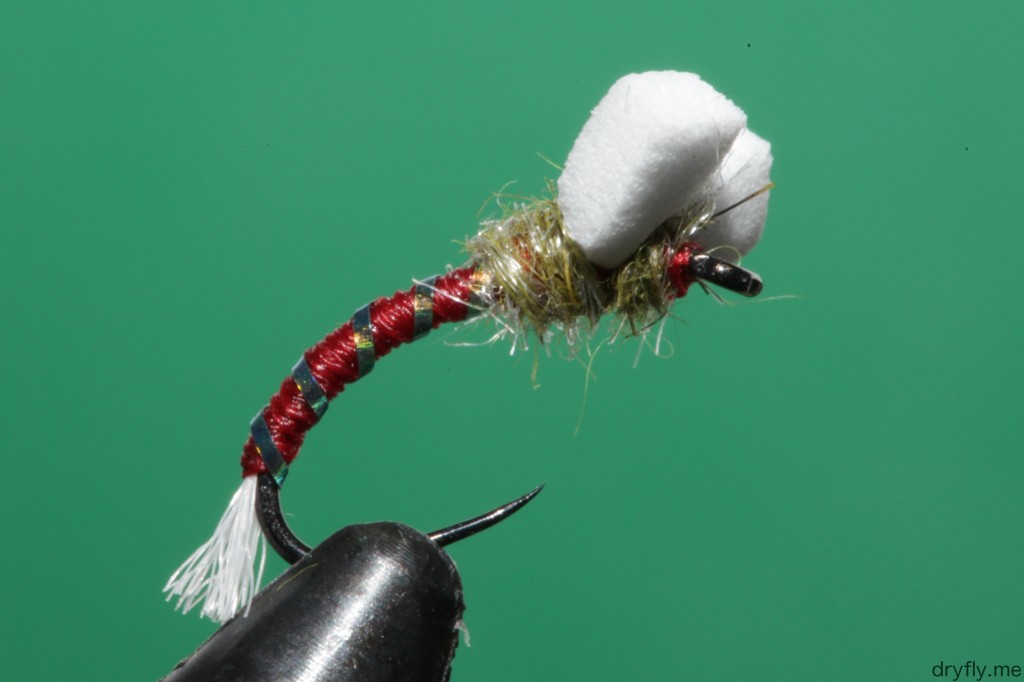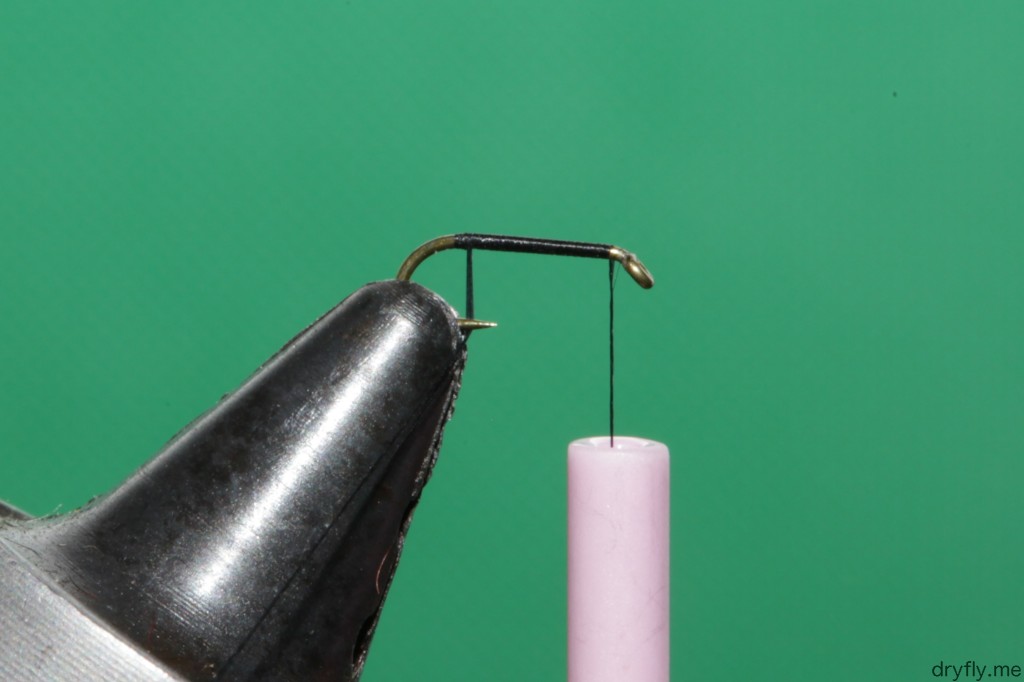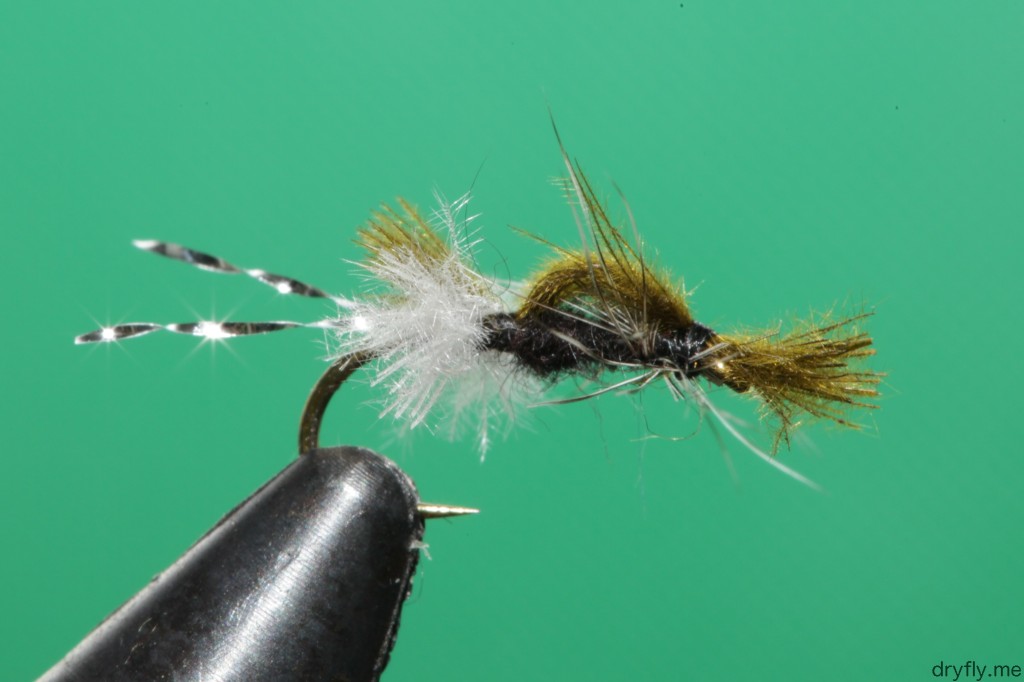
Hook: Knapek Midge Pupae #16
Body: Red UNI 8/0 with UNI Mylar #16 Peacock wrapping
Tail: White Antron
Wing: White foam 2mm
Thorax: Hare’s Ear Plus Dubbin Dark Olive
A very simple emerger to tie that should sit nicely in the surface
Tying very small flies (down to #32) one of the first thing to consider is what kind of thread to use to avoid building up too much. So far I have tested out 3 different threads that I use for sub #20 hooks:
Here I have wound up the different threads on a TMC 100 #24 hook to give you an idea on how it looks like.
I normally don’t take this out until I hit #30 or #32, but for these very small flies this thread is the absolute best: the build-up is hard to notice! But, this of course comes at a cost, it can be a most frustrating thread to work with compared to anything else: it feels like thin silk between your fingers and it will break as easy!

This thread is pre-waxed and is easier to work with than the UNI 17/0 thread. Since the UNI only comes in white this is the other #30/#32 thread that I use. The TMC is stronger than the UNI thread so it is “easier” to work with on the small hooks.

The Sheer 14/0 is my default thread for anything sub #18 – this thread is strong compared to its minimal buildup and is very easy to work with. It also comes in a wide variety of colors that makes it ideal to build bodies for small emergers/nymphs. This is also one of the threads I can use for large atlantic salmon flies when building up lots of material to avoid buildup of thread.
 Hook: Mustad 94840 #16
Hook: Mustad 94840 #16
Thread: Sheer 14/0 black
Taimen Krystal Flash
White CDC
Dark Olive CDC
Grizzly Hackle
First post here on dryfly.me, this hatching midge pattern comes from fluefiskesiden.no. Still working with my new macro lense and blitz, so not optimal on quality yet, but working on it.
This pattern makes a very nice profile, so will create some more of this from #16 down to #24
Recent Comments